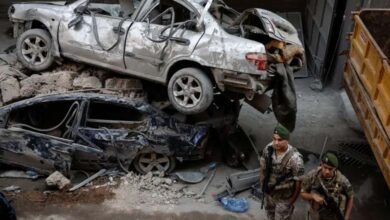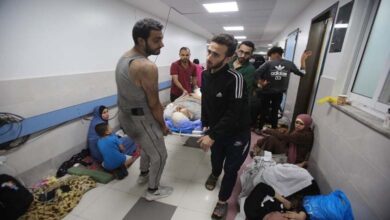US pressure pushes Israel to bring debris-removal equipment into Gaza

Hebrew newspapers report that the purpose of the planned debris-removal operation in Rafah is to prepare the area for the establishment of a new humanitarian zone that will receive thousands of Palestinians without Hamas control.
Israel is preparing to bring heavy machinery into the city of Rafah in southern Gaza to begin clearing rubble, according to a Hebrew newspaper, as part of US pressure, while the Israeli state carries out multiple violations related to the ceasefire agreement. Rafah is among the areas still occupied by the Israeli army inside Gaza.
According to Kan, the public broadcasting channel, “as part of US pressure on Israel to prepare for the next stage of President Donald Trump’s plan, with only two deceased hostages reportedly remaining in Gaza, the Israeli army is preparing to bring heavy machinery into Rafah, perhaps as early as next week, to launch a large-scale rubble-removal operation.”
Palestinian factions say that since the beginning of the first phase of the ceasefire on October 10, they have handed over 20 Israeli hostages alive and the remains of 28 others, representing all the bodies they held.
Israel, however, has claimed that one of the bodies it received does not belong to any of its hostages, and that other remains were not new but belonged to a hostage whose body had already been retrieved. It conditions the start of negotiations for the second phase of the agreement on receiving the remains of two hostages it says are still in Gaza.
According to Kan, the aim of the expected debris-removal operation in Rafah “is to prepare the area for the establishment of a new humanitarian zone that will receive thousands of Palestinians, without Hamas control.”
The channel adds that “later, according to the US plan, a foreign military force will operate in the area, which is part of the zone under Israeli control known as New Gaza.”
It states that “at this stage, the countries that agreed to send troops to Gaza (not named) are not willing to operate in areas controlled by Hamas, meaning Old Gaza.” It adds that “in recent days, Israeli forces have begun clearing unexploded ordnance in Rafah and pumping cement into tunnels, in order to prepare the ground for the next phase.”
The channel explains that “the Israeli logic is that even if no progress occurs toward the next stage (due to Hamas’ refusal to lay down arms), these actions on the ground serve Israel’s interest in destroying terrorist infrastructure.”
It notes that “the preparation of the ground does not include the Jenina neighborhood in Rafah, where dozens of fighters remain entrenched underground.”
For more than a week, the Israeli army has been targeting Palestinians it says belong to Hamas and who are trapped in a tunnel east of Rafah, estimated by Israel to number several dozens.
A ceasefire agreement between Tel Aviv and Hamas ended a genocide carried out by Israel in the Gaza Strip, with US support over two years since October 8, 2023, which left more than 69,000 Palestinians dead and over 170,000 injured, most of them women and children. Reconstruction, according to the UN, is estimated to cost around 70 billion dollars.
However, Israel continues to commit numerous violations that have resulted in the deaths and injuries of hundreds of Palestinians, and still imposes restrictions on the entry of humanitarian aid into Gaza.
Among the main steps expected in the second phase of the US president’s plan is the deployment of an international stabilization force in Gaza.
Last week, the UN Security Council adopted a resolution establishing international stabilization forces to be deployed in Gaza, and a Peace Council chaired by Trump, to manage Gaza’s affairs during a transitional phase lasting until the end of 2027.












